Is It Possible to Make Black Fire?
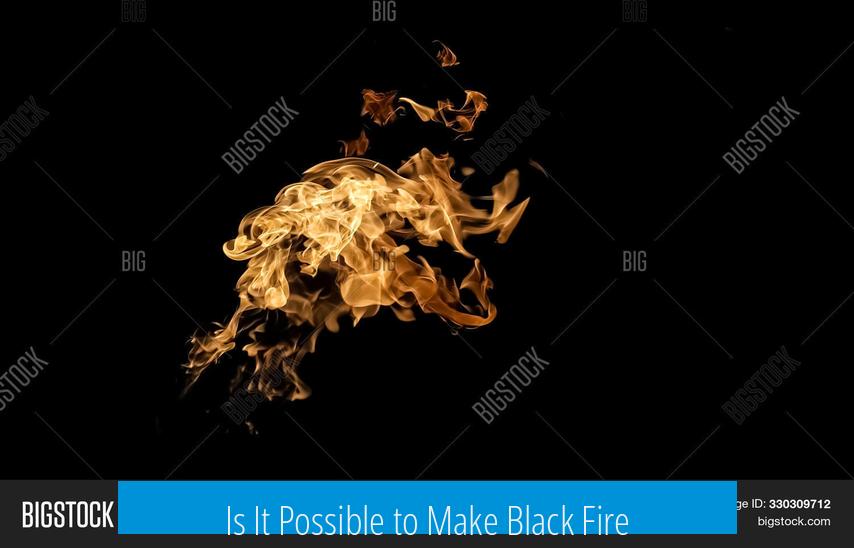
True black fire, defined as fire that absorbs light and appears black, is not physically possible because fire is a plasma that emits light rather than absorbs it. However, certain special conditions can produce flames that appear black or invisible. These effects rely on specific interactions between light and flame. The term “black fire” is thus either a misnomer or a visual illusion achieved under limited circumstances.
Understanding Fire and the Nature of Black
What Is Black?
Black is the absence or near absence of visible light. It occurs when an object absorbs all incident visible light or emits none at all. Because black is defined by missing light, it cannot be emitted as a color itself. Black is not a color emitted by any light source.
How Fire Produces Light
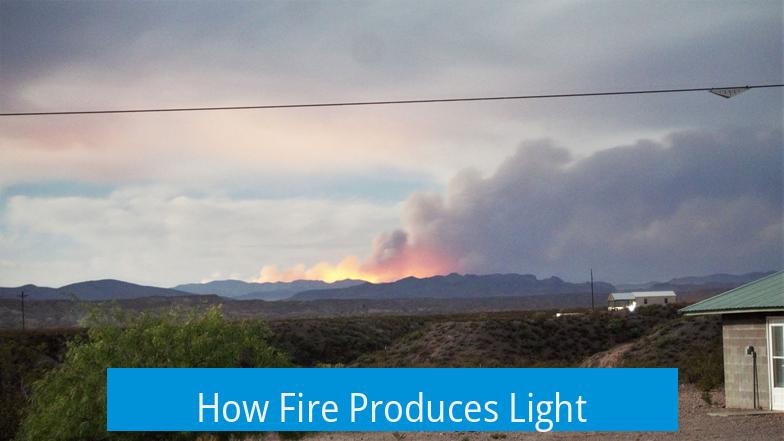
Fire is ionized gas, or plasma, that emits photons due to excited atoms and molecules returning to lower energy states. This emission causes the visible glow characteristic of flames. Emission of light is a fundamental aspect of combustion plasma.
Because fire emits light, it cannot be truly black in appearance. A black object absorbs visible light but does not emit it, while fire must emit some light to exist as plasma.
What Could “Black Fire” Mean?
Possibility 1: Flames That Emit Light Outside Visible Spectrum
Some flames emit light primarily in ultraviolet or infrared parts of the spectrum, making them nearly invisible to human eyes. For example:
- Methanol flames: Burn with a faint blue flame barely visible in bright light, appearing nearly invisible or “colorless.”
- Hydrogen flames: Burn with a nearly invisible flame emitting UV light, detectable only by special instrumentation.
- High-temperature flames in zero gravity: On space stations, very hot flames radiate mostly ultraviolet light.
These flames may appear “black” or invisible but are still energetic plasmas emitting non-visible photons instead of visible light.
Possibility 2: Flames That Absorb Specific Wavelengths of Light
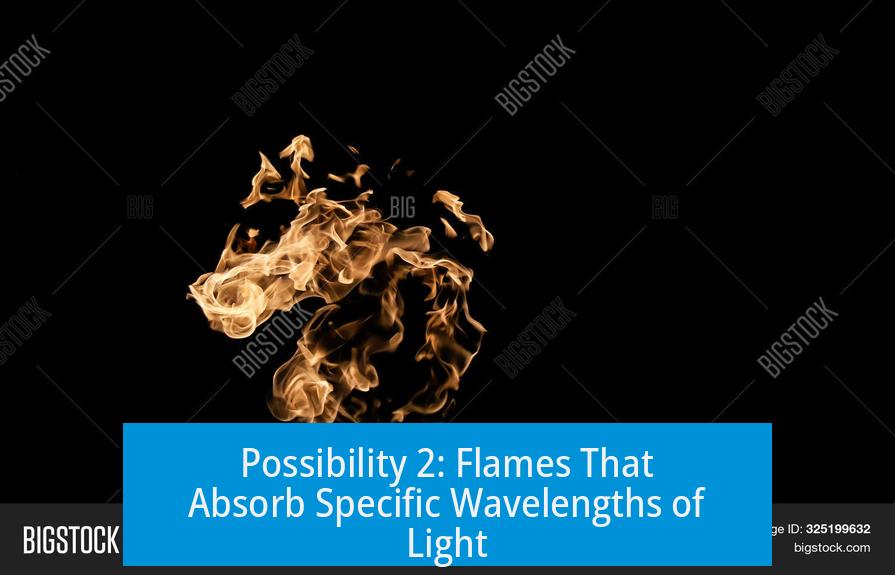
Under certain controlled lighting and chemical conditions, flames can absorb specific wavelengths of light, creating the illusion of a “black flame.”
- Sodium flame test under sodium vapor lamp: Sodium salt flames typically emit bright yellow light at 589 nm. Under a sodium vapor lamp emitting light at the same wavelength, the flame absorbs the lamp’s light, making the flame appear black.
- This is an optical illusion occurring only because the flame absorbs the very narrow band of light from the lamp but is visible in other lighting.
This “black flame” is actually burning sodium plasma absorbing sodium light, not a flame absorbing all visible light or emitting darkness.
Distinguishing Black Flames from Black Smoke
Black smoke arises from incomplete combustion and soot particles, absorbing and scattering visible light. It appears black because soot absorbs light and blocks visibility.
Black smoke is not black fire. It is particulate matter, not luminous plasma.
Can Cold Flames Be Considered Black Fire?
Cold flames are low-temperature, often endothermic reactions that do not emit visible light. They may be termed “cold flames,” but they lack glowing plasma characteristics and are chemically distinct from typically hot, luminous flames.
Because fire, by definition, involves heat and light emission, cold flames without light emission fail to meet the standard definition of fire.
Experimental Examples of Flames Appearing “Black” or Invisible
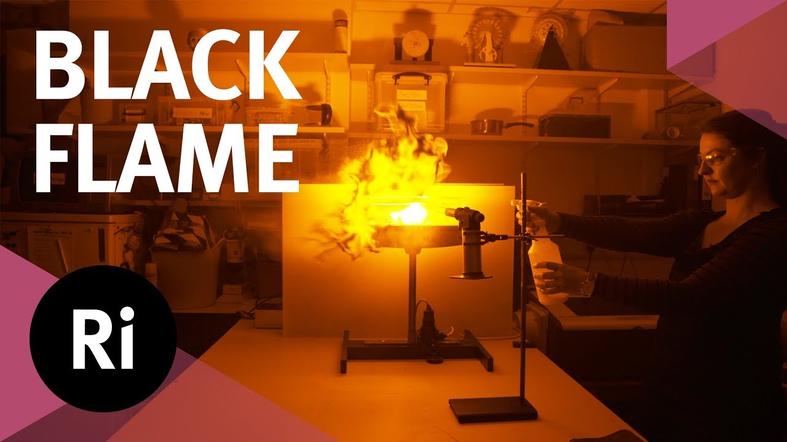
| Example | Explanation | Appearance |
|---|---|---|
| Sodium flame under sodium vapor lamp | Flame absorbs lamp’s narrow wavelength light, creating black appearance | Black flame illusion |
| Methanol flame | Burns with faint blue light that is nearly invisible in bright surroundings | Nearly invisible (transparent) |
| Hydrogen in oxygen | Burns with UV radiation mostly outside visible spectrum | Invisible to naked eye |
The Role of Light Bending and Shadows
Visible flames may cast shadows or appear to flicker due to changes in refractive index and turbulent flow, not because they absorb light completely.
Shadows from fire arise because flame gases bend or scatter light, redirecting rather than absorbing it fully.
Misconceptions and Cultural References
- Popular media and games refer to “black flame” or “black fire” as fantastical, supernatural phenomena without physical basis.
- Reports of “black flames” often describe visual effects involving smoke, lighting, and refraction rather than actual black fire plasma.
- No scientific process produces stable, truly black, light-absorbing fire plasma.
Summary: Why Black Fire Cannot Exist Physically

- Black means absence of emitted light; fire requires light emission.
- Fire is glowing plasma emitting photons; absorbing light contradicts fire’s energetic nature.
- Some flames appear black only under specific lighting conditions due to selective absorption (e.g., sodium flame under sodium lamp).
- Invisible flames emit light outside visible spectrum (UV or IR), not black light.
- Black smoke is not fire but soot particles in air.
- Cold flames exist but lack glowing plasma; they are chemically distinct and not black fire.
- Black fire is a fictional or visual illusion concept, not achievable in standard physics and chemistry.
Key Takeaways
- Black fire, in the strict physical sense, is impossible because fire emits light, while black means no emitted light.
- Flames appearing black arise from selective absorption of specific light wavelengths under special lighting setups, such as sodium flames observed with sodium vapor lamps.
- Invisible flames (methanol, hydrogen) burn with light outside the visible spectrum but do not produce visible blackness.
- Black smoke resembles blackness but arises from soot, not fire plasma.
- Fire absorbing light contradicts plasma physics; thus, black fire remains a physical impossibility and a conceptual or fictional idea.
Would It Be Possible to Make Black Fire?
Simply put, no—true black fire, in the sense of fire that absorbs light instead of emitting it, defies the very nature of fire and physics. Fire is a form of plasma glowing with energy, always releasing light. Black, by definition, is the absence of light. So a genuine black flame that sucks in light rather than shining it out isn’t really fire at all. But, the story doesn’t end there. Let’s explore this fiery conundrum with some fascinating science, a hint of mischief, and a sprinkle of smoky illusion.
Black Fire? What Even Is Black, Anyway?
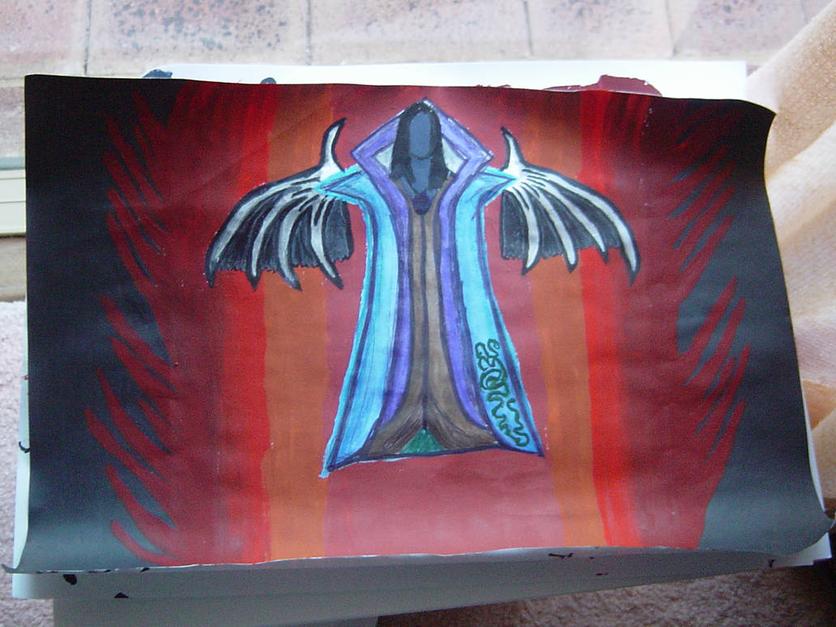
Let’s get this straight: black isn’t a color in the visible light spectrum—it’s the absence of color, or more accurately, the absence of light. Fire is the opposite. It’s plasma emitting photons, a dazzling show of energy. Imagine trying to make a glowing orb that somehow hides *all* light instead of producing it. That’s a superpower beyond flame’s reach.
“A candle flame leaves a shadow because it bends light, not because it swallows it whole.”
So, any “black flame” you see that casts shadows is a trick of light bending, not absorption. It’s like that annoying friend who blocks your view but still lets the sun shine around them.
Invisible Flames and Non-Visible Spectrum Fire
Okay, what about flames that emit light outside human vision? Methanol fires, for example, burn almost invisibly under normal conditions. They emit a faint blue spark that often escapes notice in daylight. This “invisible” fire is probably the closest real-world approximation of “black” flames—a ghost fire that’s there, but hides like a ninja in broad daylight.
Hydrogen flames in oxygen also produce a nearly invisible flame, burning hot yet eluding our eyes by radiating in the ultraviolet. Space station experiments show that in zero gravity, flames can get so hot they glow mostly in the UV spectrum, making them appear colorless — if not outright undetectable without instruments.
The “Black Flame” Trick: Magic in the Lab
Here’s where things get downright fascinating. If you perform a sodium flame test under a sodium vapor lamp, the result is mind-bending: the flame appears black. How? The sodium vapor lamp emits a very specific yellow-orange wavelength—589 nanometers—the exact wavelength sodium atoms absorb when burning.
Since the flame *absorbs* that exact light from the lamp, it appears black to our eyes. But, remove the sodium vapor lamp, and the flame returns to its usual yellow-orange glow. So, this “black flame” is a very particular optical illusion, dependent entirely on the lighting environment.
- Burn metal salts to produce a flame.
- Turn on a sodium vapor lamp shining at the flame.
- The flame absorbs the lamp’s yellow light, looking black against the bright background.
It’s not permanent, not truly black—more like the flame playing hide-and-seek under a very specific spotlight. Scientists call it a neat trick, and chemists love the sodium flame test. But don’t expect it to work at your campfire.
Smoke is Black. Flames? Not So Much.
People often confuse black smoke with black flames. Burning incomplete combustion, especially oxygen-starved acetylene, produces thick black smoke. This soot-rich smoke—and not the flame itself—is black. It’s what makes city skylines look apocalyptic after a fire, or helps produce “lamp black” pigment for your ink pen.
This distinction is crucial: the blackness here isn’t fire; it’s unburned carbon particles floating in the air. The flame itself is still emitting light.
Can Superhot Alcohol Fires Be Considered Black?
Another idea: what about superheated alcohol flames that could be “colorless”? Some suggest these fires burn so hot they no longer emit visible light, slipping into infrared or ultraviolet spectra. They may appear almost transparent. Practically speaking, they’re not black, more like invisible or ghost flames.
This reminds us how limited our eyes can be when dealing with energetic wonders outside the visible spectrum.
Black Flames in Pop Culture and Anecdotes
“Black flame” is a term often borrowed from fantasy (like in the video game Elden Ring), where rules bend, and magic thrives. In such universes, black flames symbolize power or curse, and rules of physics take a coffee break.
Some people report seeing “black flames” visually, but these often turn out to be illusions, reflections, or non-fire phenomena mistaken for flame. There’s no scientific evidence for naturally occurring, absorbing black fire.
So, What Have We Learned—and Can We Ever Have Black Fire?
| Aspect | Reality |
|---|---|
| True Black Fire Absorbing Light | Impossible—fire emits light; it cannot absorb all light and remain fire. |
| Invisible/Non-visible Flames | Methanol and hydrogen fires burn with weak or UV light, appearing nearly invisible. |
| “Black Flame” Under Special Lighting | Sodium flame test under sodium vapor lamp creates temporary black flame illusion. |
| Black Smoke | Exists but is soot, not flame or light-absorbing plasma. |
The fascinating answer is: Black fire as light-absorbing plasma cannot exist because fire is defined by its emission of energy and light. However, clever use of lighting and chemistry can produce the illusion of “black flames,” and some flames disappear from our view due to light spectrum limits.
Practical Tips for Experimenting Safely
- To observe the black flame illusion, set up a sodium vapor lamp and perform the sodium flame test with metal salts. Do this in a controlled lab environment with proper safety gear.
- Try observing a methanol flame in daylight and then in darkness. Notice how it nearly disappears in light—close to a “black” flame experience.
- Never confuse safe experimentation with “playing with fire” recklessly—flammable liquids and gases require respect.
Curious About Seeing Fire Differently?
Next time you look at a flame, ask: what colors am I actually seeing? Does the flame emit light you can’t see? Could I trick my eyes with a lamp setup? These simple questions open doors to the amazing physics of light and matter.
In summary, black fire is not just rare; it’s a physical impossibility if it means light-absorbing plasma glowing in darkness. But science offers plenty of cool alternatives: invisible flames, light-bending shadows, and creative optical illusions. Isn’t it amazing how something as ordinary as fire can still hold mysteries?
Is it physically possible to create a flame that is truly black by absorbing light?
No, fire is plasma that emits light and energy. Black means absence of light, so a flame cannot absorb all light and appear truly black. Flames always emit some light or radiation.
How can a flame appear black under certain conditions?
When sodium salt burns under a sodium vapor lamp, the flame absorbs the lamp’s specific yellow light at 589 nm. This absorption lets the flame look black, but only under that exact light. It is an optical trick, not true black fire.
Are there flames that are invisible or outside the visible spectrum?
Yes. Methanol burns with a very faint blue flame that can look invisible in daylight. Hydrogen in oxygen burns with an invisible flame emitting ultraviolet light, which humans cannot see. These flames appear “black” only because they emit no visible light.
Does black smoke mean the flame itself is black?
No, black smoke results from incomplete combustion producing soot, which absorbs light. The flame is not black—only the smoke appears dark. True black flames don’t exist as flames must emit or scatter some light.
Can a “black flame” exist in fantasy or visual media?
Yes. The concept of black flames shows up in games and stories as a special effect or magic. These are artistic ideas and don’t reflect physical possibilities of fire in the real world.


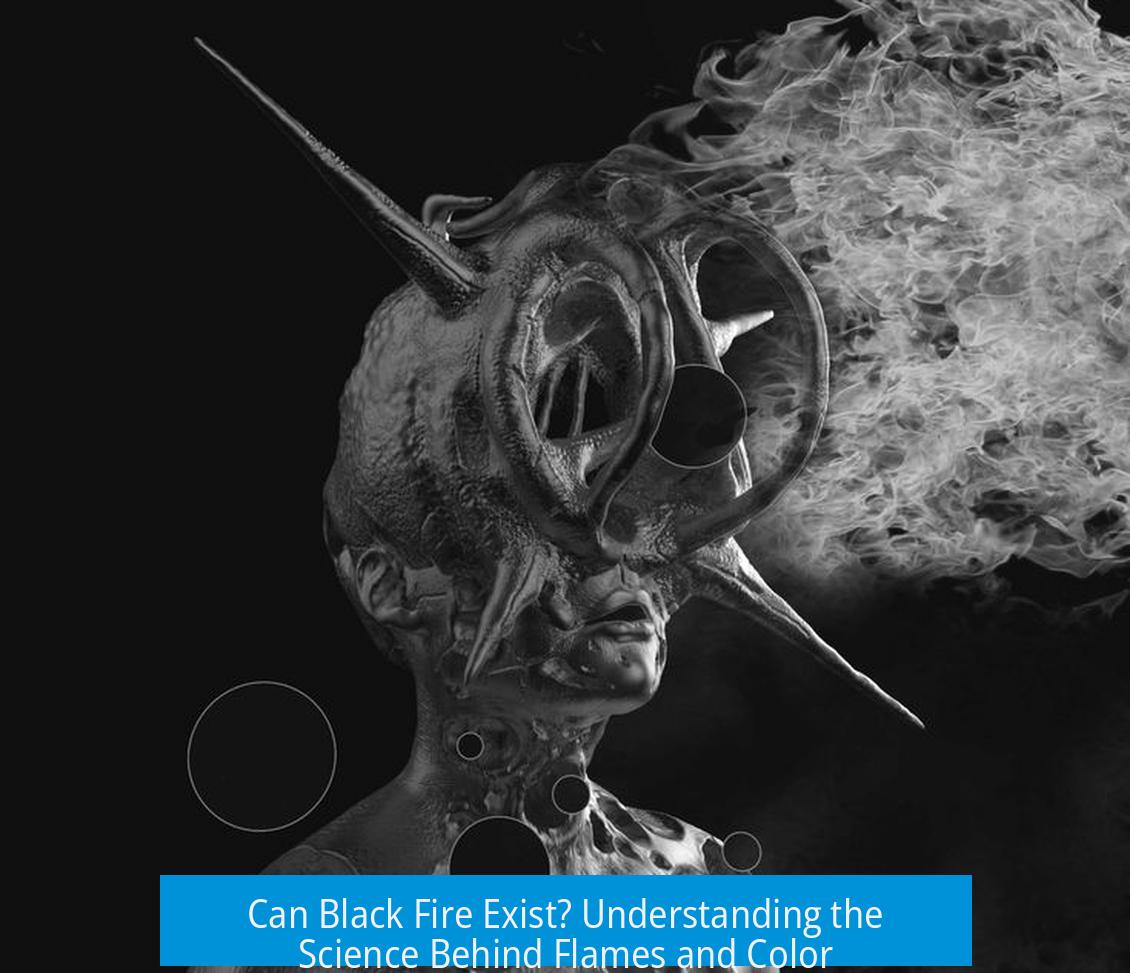

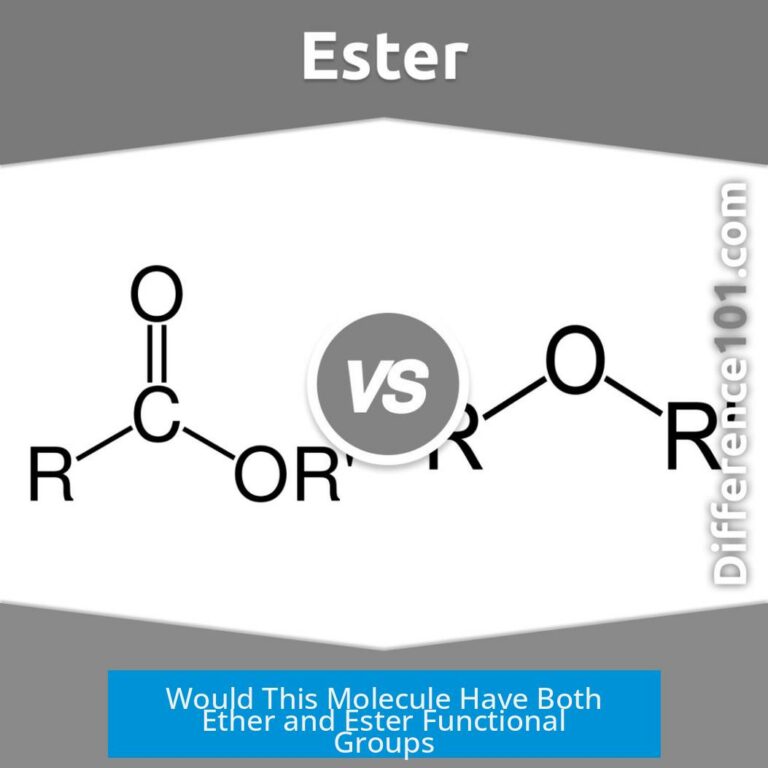
Leave a Comment